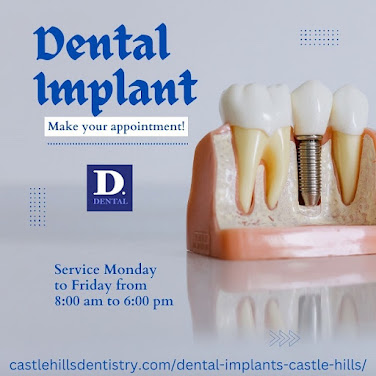What are dental implants made of and how do they work?
Dental implants are one of the best ways to replace missing teeth for those who have lost them. But what exactly are dental implants? These are metal screw-shaped devices that are surgically implanted into the jawbone beneath the gums. These will then be used as the foundation for the dentist to mount the replacement teeth.
How do Dental Implants Work perfectly?
Dental implants have evolved over time in terms of how they function. But, after all these years, its function has remained the same: to function similarly to and replace natural teeth. This means you can eat and clean with them just like you would with natural teeth.
The root (which is typically made of zirconia or titanium), the abutment, and the crown are the three main components of a dental implant. The root is screwed into the jawbone, acting as the anchor for the entire implant. The metal abutment is screwed into the root, where the crown (or replacement tooth) is then attached.
How to Get a Dental Implant?
- The dentist will administer anesthesia, which will cause you to fall asleep.
- The root is surgically inserted into the jawbone, and the abutment is then placed on top of the root.
- You will most likely be tired and have soreness in your mouth after the root insertion. Expect to have gauze in your mouth as well.
- You will have enough time to recover. At this point, the implant will begin to integrate with your jawbone (a process known as osseointegration), in which the bone will grow around the implant and strengthen it.
- During this recovery period, you will be advised to eat soft, healthy foods. The dentist will place a temporary flipper tooth so that you can continue to eat normally.
- After a few months of osseointegration, the dentist attaches the crown to the abutment.
Who Is Eligible for Dental Implants?
Anyone in good oral and overall health with sufficient bone support is a good candidate for a dental implant. In some cases, a bone grafting procedure may be required to provide adequate bone support. Those suffering from an autoimmune disease or a chronic illness may not find this to be the best option for replacing missing teeth.
Before getting a dental implant, you should first consult your primary care physician and your dentist. If your doctor and dentist agree that you need an implant and are in good enough health, you must follow a strict oral hygiene regimen before, during, and after the procedure.
Types of Dental Implants
Endosteal and subperiosteal dental implants are the two main kinds. The former is inserted into the bone to fuse with it, whereas the latter simply sits on top of the jawbone and is rarely used anymore due to its poor long-term performance. In either case, a several-month recovery period is required.
- Implants with a single tooth. These only treat the surrounding teeth and replace the roots of missing teeth. Aside from improving aesthetics, single-tooth implants also help to retain speech sound, prevent natural teeth from shifting, and prevent bone loss.
- Dentures and bridges are supported by implants. These implants are used to support a denture bridge when multiple teeth are missing. Instead of relying on nearby teeth for support, these also rely on implants. To do so, the dentist inserts at least four implants to serve as denture anchors.
Dental implants, because they are screwed into the jaw bone, should be more secure and comfortable in the long run than traditional dentures. They have the same feel as natural teeth and will not shift. Indeed, dental implants are an excellent way to reclaim your beautiful smile.

.jpg)
.jpg)

Comments
Post a Comment